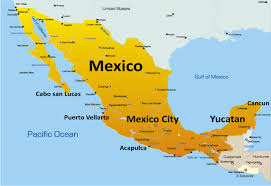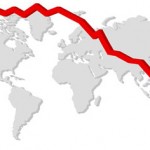Two decades after the peso crisis, Mexico faces new shocks

MANY factors contributed to Mexico’s “tequila crisis” in 1994, but two stood out: tighter monetary policy in the United States and political instability at home. Almost exactly 20 years later, the same forces are again weighing on the currency, compounded by falling oil prices. The situation is not nearly as precarious as it was then, but Mexican policymakers may still need a shot or two to steady the nerves.
Since the 50% devaluation of 1994 the peso has floated freely, which makes it safer than it was 20 years ago but something of a punch bag for nervous investors. Like many emerging-market currencies it has been dropping against the dollar—it is down 11% since June. On December 8th Mexican authorities said they would intervene to support it by auctioning $200m on days when it sinks by at least 1.5% against the dollar. On December 10th it hit 14.5, its lowest level in more than five years.
The peso began falling roughly when the price of Mexican oil did, suggesting a link. To protect the third of its revenue that comes from oil, the government has fixed a floor price for a quarter of its output over the next year of $76 a barrel, using hedges. However, Mexico’s production has fallen sharply recently and if prices remain low, the pain could be felt in lower growth and slimmer budgets in years ahead.
That is partly because low prices may reduce the appetite for investing in Mexico’s oil industry, whose opening next year is expected to be a powerful driver of economic growth after 2016. To entice investors, Mexico may have to put its most attractive assets on the block straight away. It is also because the budget deficit is higher than it should be given the oil bonanza of recent years. Luis de la Calle, an economist, notes that this year it is expected to climb above 4% of GDP, even though at one point Mexican oil was fetching over $100 a barrel. Oil is bringing in little more than half as much now, yet the government is promising to keep the deficit below 4% from next year on. That will be hard to do without slashing spending. As it is, despite hefty public investment in infrastructure intended as a stimulus, the economy is likely to grow by only 2% this year.
Meanwhile, several scandals have sapped the popularity of Enrique Peña Nieto, the president. According to another economist, Rogelio Ramírez de la O, this “window of weakness” has left his government susceptible. It is under pressure to reverse recently introduced tax hikes. Inflation is already a little above target and the peso’s fall will mean expensive imports, lifting firms’ costs and cutting real wages. Both businessmen and the governor of the central bank have questioned plans to raise the minimum wage next year.
These domestic tussles are playing out against a global backdrop that could both help and hinder Mexico. Like many currencies, the peso is weakening on the expectation that the Federal Reserve will raise interest rates as the American economy recovers, much as it did in 1994. In this scenario, Mr Ramírez de la O expects the peso to fall to about 15 per dollar in the next six months. That could force the central bank to raise interest rates. Yet a stronger American economy is also good for Mexico because it sucks in more exports.
Source: The Economist – Two decades after the peso crisis, Mexico faces new shocks





























